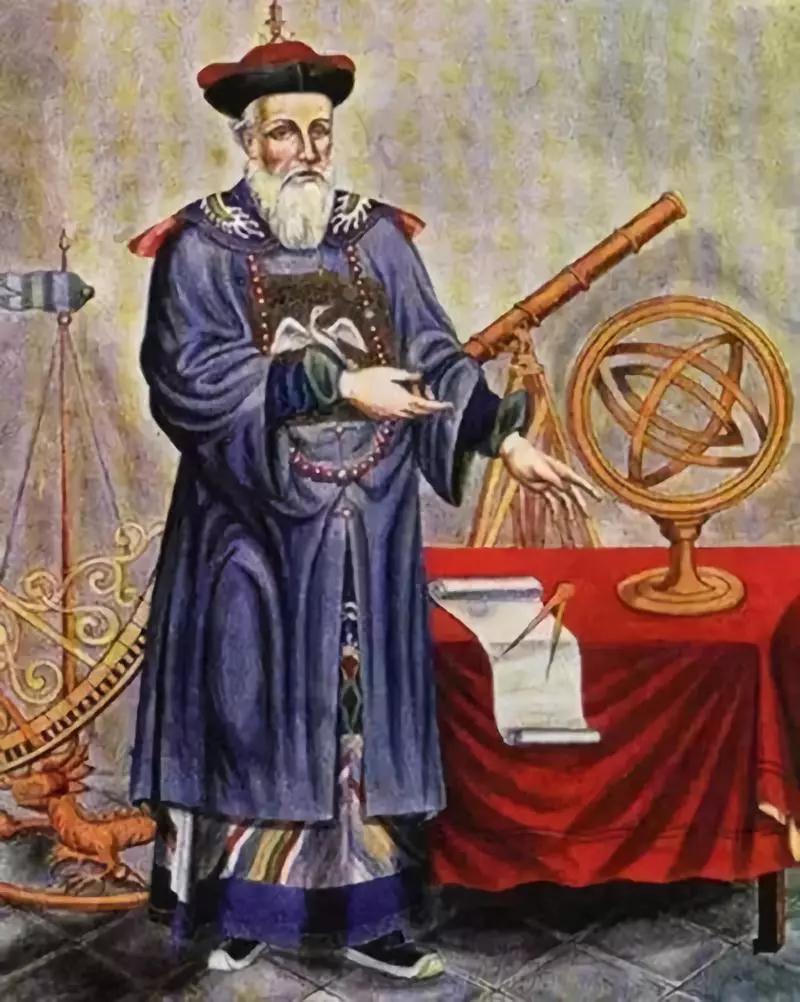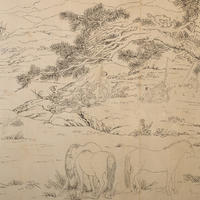More about Giuseppe Castiglione
Works by Giuseppe Castiglione

Sr. Contributor
Giuseppe Castiglione might actually be the most interesting man in the world.
Or should we say Lang Shining? Born Giuseppe Castiglione, the Italian artist adopted the Chinese name Lang Shining after traveling to China as a Jesuit missionary in 1715. Castiglione listened to the other Italian Jesuits who had reached China before him and applied their sage advice. Knowing that he was an artist, they told Castiglione to adopt some aspects of Chinese culture. Castiglione learned the language, changed his name, and utilized Chinese styles and techniques in his own art. These cultural gestures went a long way; Castiglione’s Chinese art career soon took off. Like Diego Velazquez painting for the court of King Philip IV, Castiglione became the appointed painter for the imperial court and worked for three Qing dynasty emperors over a career that spanned fifty years.
Castiglione worked within well-established themes, such as images of animals and landscapes, but he used his Western training, which centered on the Italian Renaissance, to put a personal flair on traditional Chinese scroll painting. The Qing emperors admired the naturalism that Westerners like Castiglione brought. They believed that, when rendered more naturalistically, these paintings helped document their appearances and brave deeds more accurately. Pretty egotistical, but okay. After his paintings made their way into the imperial art collection, Chinese artists began to pick up what Castiglione was putting down. These native artists ended up absorbing some of the Renaissance components that Castiglione put in his work, especially the lessons in perspective. I wonder what Ai Weiwei would have to say about all this.
The Jesuits, also known as members of the Society of Jesus, are part of the Catholic Church. In a curious turn of events, more than 1,000 Jesuits traveled from their native Europe to China to spread the word of Christianity and, rather unwittingly, initiated a period of cultural exchange between the eastern and western worlds. While other Jesuit missionaries focused on religion and conversion, Castiglione had the privilege of never preaching, only painting. His unique missionary status allowed him to develop a relationship with the emperor, who appreciated his friendship when he was having problems with the other missionaries. In one especially dramatic incident, Castiglione threw himself on the ground begging the Qianlong emperor to intercede and halt the killing of a fellow Jesuit. However, after saving a different Jesuit prior to this incident, the Qianlong emperor rebuked Castiglione as being one of the many Europeans who never fully grasped the native culture. Despite the tense relationship with Jesuits at large, the visual artists had united these two unlikely friends. When Castiglione died in 1766 at seventy-eight years old, Qianlong personally wrote the artist’s obituary in his own calligraphy, which was a huge honor.
Sources
- Arnold, Lauren. “Of the Mind and the Eye: Jesuit Artists in the Forbidden City in the Seventeenth and Eighteenth Centuries.” Pacific Rim Report. The Ricci Institute at the USF Center for the Pacific Rim. 27: April 2003. http://www.ricci.usfca.edu/assets/p
- China Online Museum. “Lang Shining: One Hundred Horses.” https://www.comuseum.com/painting/masters/lang-shining/one-hundred-hors…. Accessed July 15, 2019.
- Matthew Ehret-Kump. “The Passion of Giuseppe Castiglione.” China Channel. Los Angeles Review of Books. January 17, 2019. https://chinachannel.org/2019/01/17/castiglione/. Accessed July 22, 2019.
- Hearn, Maxwell K. “The Qing Dynasty (1644–1911): Courtiers, Officials, and Professional Artists.” The Heilbrunn Timeline of Art History. The Metropolitan Museum of Art. Department of Asian Art. October 2003. https://www.metmuseum.org/toah/hd/qing_4/hd_qin
- Media Center for Art History. “Giuseppe Castiglione (1688–1766).” Department of Art History and Archaeology. Columbia University in the City of New York. http://projects.mcah.columbia.edu/nanxuntu/html/art/castiglione.htm. Accessed July 22, 2019.
- Naquin, Susan. “Giuseppe Castiglione/Lang Shining: A Review Essay.” T’oung Pao (2009). https://warwick.ac.uk/fac/arts/history/students/modules/hi163/lectlist/…. Accessed July 22, 2019.
- Xu, Zhao. “How Jesuit China missions shaped Chinese society.” The Telegraph. China Watch. December 21, 2017. https://www.telegraph.co.uk/china-watch/society/jesuit-china-missions-c…. Accessed July 22, 2019.
Featured Content
Here is what Wikipedia says about Giuseppe Castiglione (Jesuit painter)
Giuseppe Castiglione, S.J. (simplified Chinese: 郞世宁; traditional Chinese: 郞世寧; pinyin: Láng Shìníng; 19 July 1688 – 17 July 1766), was an Italian Jesuit brother and missionary in China, where he served as an artist at the imperial court of three Qing emperors – the Kangxi, Yongzheng and Qianlong emperors. He painted in a style that is a fusion of European and Chinese traditions.
Check out the full Wikipedia article about Giuseppe Castiglione (Jesuit painter)











